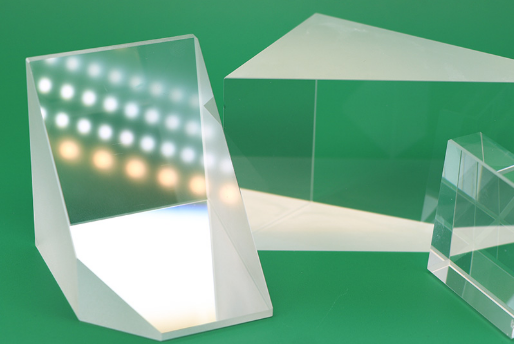What Are Optical Prisms Used For?
Dec. 19, 2023
Optical Prisms: A Brief Overview
An optical prism is a transparent solid with flat surfaces that refracts light. When light enters through one surface, it can be rotated, deviated, or dispersed before exiting through another surface. These surfaces undergo high-level polishing, and the angles between them, the quantity of surfaces, and their positioning collectively define the prism's function.
Since optical prisms redirect light at a designated angle, they may be used to reflect light, to bend it within a system, to change the orientation of an image, or to break light up into it component wavelengths or polarizations. Isaac Newton utilized a basic prism to separate a beam of white light into its constituent colors, demonstrating that white light is a composite of different hues. This method of dispersion remains employed in modern spectrographs and refractometers. Conversely, optical prisms can also merge separate optical beams into a single unified beam.
Optical prisms serve as fundamental components in various fields, facilitating the manipulation and redirection of light. Their significance spans across multiple industries, from scientific research and astronomy to everyday applications in cameras, projectors, and more. Let's delve into what optical prisms are used for and explore their diverse range of applications.
Applications of Optical Prisms
Applications in Scientific Research
In scientific research, optical prisms play a pivotal role in spectrometers, devices used for analyzing the properties of light. They assist in splitting light into its spectral components, enabling scientists to study wavelengths, identify elements, and understand the composition of substances. Additionally, prisms are integral components in optical systems used for experiments in physics, chemistry, and biology.
Optical Prisms in Astronomy
Astronomers heavily rely on optical prisms for telescopes and other observation equipment. These prisms aid in correcting and enhancing images captured by telescopes, reducing distortions and aberrations. They enable astronomers to study celestial objects with greater clarity and precision, contributing significantly to our understanding of the universe.
Utilization in Imaging and Photography
In imaging and photography, optical prisms are instrumental in various ways. They are a core element in camera lenses, assisting in the refraction of light to produce clear, focused images. Prisms enable the creation of compact camera designs while maintaining high-quality imaging capabilities. They're also used in specialized cameras for endoscopy, enhancing visual clarity in medical procedures.
Optical Prisms in Laser Technology
Laser systems utilize optical prisms for beam steering, shaping, and dispersion control. These prisms direct laser beams precisely, enabling their manipulation for diverse applications like laser cutting, engraving, medical procedures, and telecommunications. Prisms contribute to maintaining beam quality and optimizing performance in laser-based systems.
Applications in Display Systems
The functionality of optical prisms extends to display systems such as projectors and digital devices. They aid in light modulation and redirection, enhancing image quality and color accuracy. Optical prisms contribute to the projection of clear, vibrant images in projectors and ensure optimal display performance in various electronic gadgets.
Conclusion
The versatile nature of optical prisms makes them indispensable across an array of industries and applications. From scientific research and astronomy to imaging technology and laser systems, these prisms serve as vital components, enabling advancements in numerous fields.
Understanding the diverse applications of optical prisms highlights their pivotal role in modern technology and scientific advancements.






















